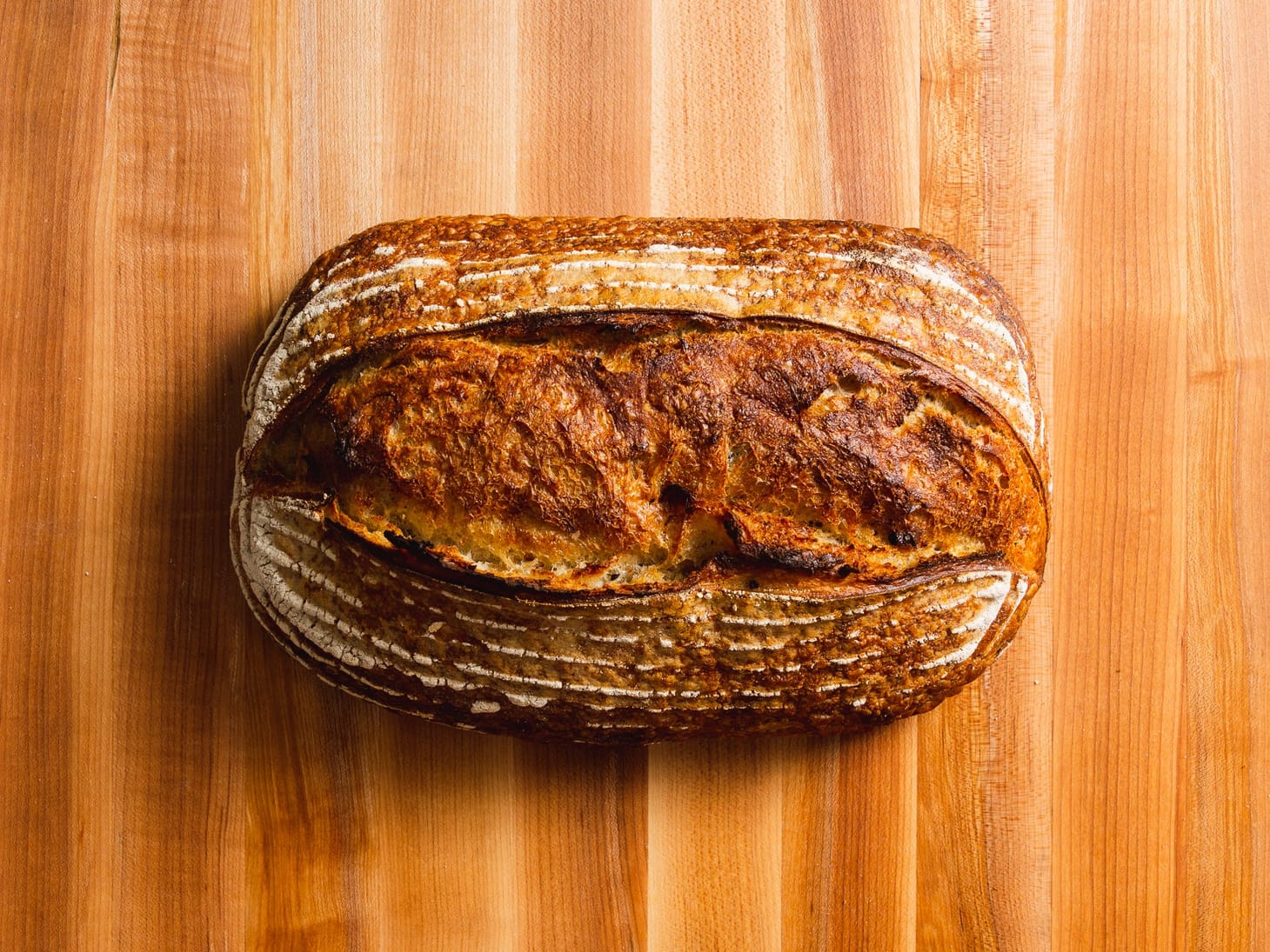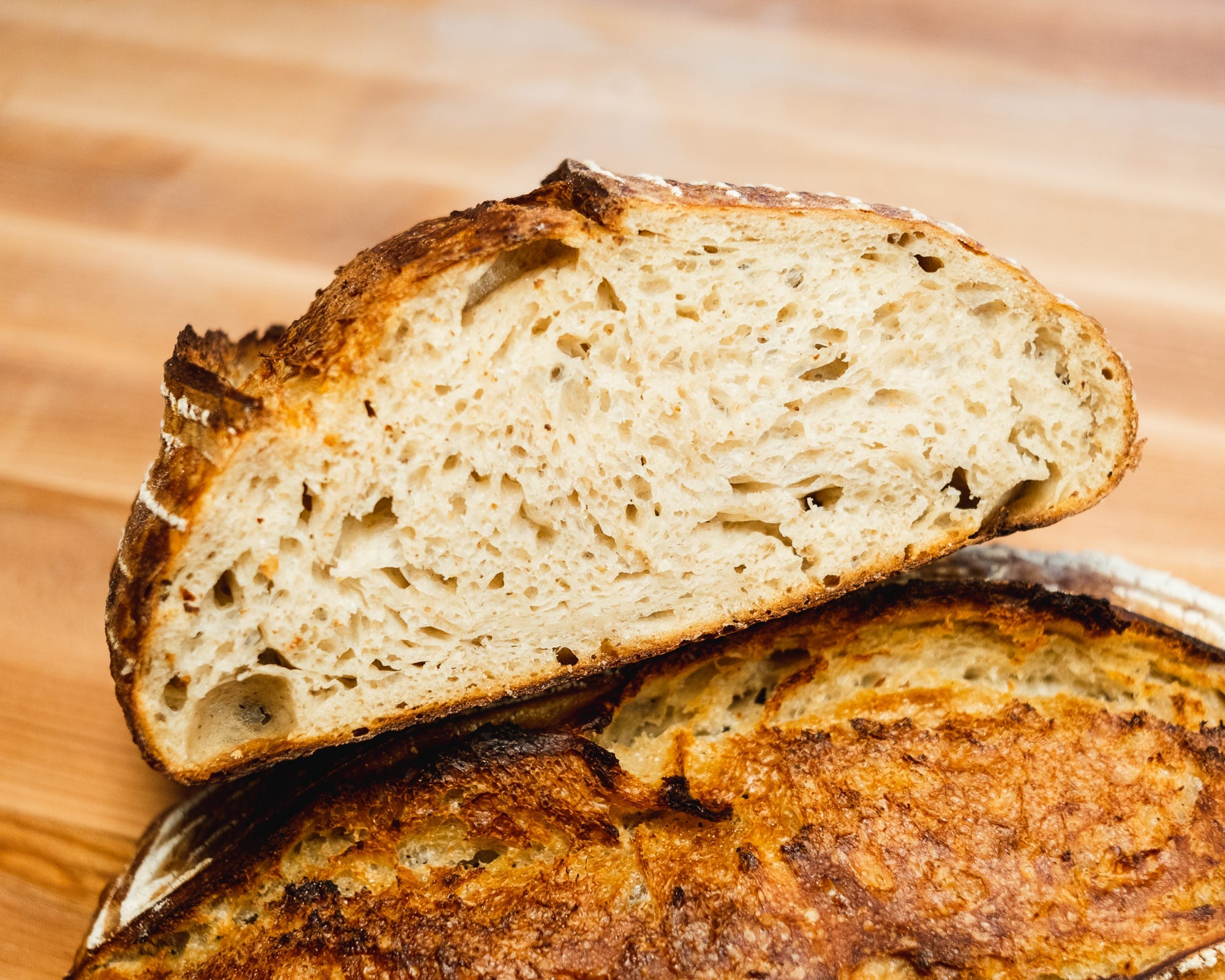Mash it up
Or: Better Bread Through Lawsonization

Table of Contents
I shared a version of this with paid subscribers last week, but I wanted to (YET AGAIN, I know) revisit the subject of tangzhong, specifically the use of dried instant mashed potato flakes, which I have decided are the ideal universal tangzhong donor ingredient, meaning that anytime you want to add the crumb-tenderizing, staling-arresting properties of a cooked starch paste, you can just add dried instant mashed potatoes to the flour, along with additional water and salt so that the effective ratios remain the same. I find this particularly useful when I want to just “see what happens” with the addition a tangzhong to a bread, without having to sort out the details on how much additional water the dough will need. Which is exactly what I did with the loaf above.
A few days after my Potato, Potato post, I received an email from my friend Dr. Andrew Ross, professor of all things grain at Oregon State, which included this paragraph explaining the mystery of why instant mashed potatoes keep their gelled state, even when dried (emphasis mine):
Potato flakes, instant mashed potatoes are cooked and dried, maybe spray dried, but the starch never returns to the condition it was in the uncooked potato. The amylopectin doesn't really retrograde much and when dried fast enough remains as an amorphous matrix predisposed to fully rehydrate on the next introduction to water, even without heating. The amylose probably retrogrades, but this is an advantage as it doesn't rehydrate fully on the next introduction to water and gives some structural strength to the rehydrated mash. In potatoes this is complicated by the presence of starch within cells and whether the cells rupture or not during cooking. Rupture depends on the amount of cooking and the amount of shear applied during stirring/mixing.
If you aren’t already aware, starch is made up of two different molecules, amylopectin and amylose. These two types of starches exist in different ratios in different plants, which helps explain the difference in texture and behavior among the different foods. Both amylose and amylopectin are made up of long chains of sugar (glucose) molecules, but their size and arrangements differ.
Amylose is made up mainly of long straight chains of sugars (about 1000 in total), with the occasional branch here and there. Amylopectin is highly branched, and with from 5000-20,000 sugars, much larger in size. Amylose, being small and regular in shape, can form compact, tightly bound clusters that are slow to absorb moisture and gel; amylopectin, being kind of blobby and irregularly shaped, doesn’t form clusters, making it more easily accessible to water, so it gels quickly and at much lower temperatures. And it is much slower to undergo the reverse reaction (retrogradation, aka staling).
In both wheat flour and potatoes, amylose and amylopectin exist in about a 1:4 ratio. This, plus its lower gelling temperature, means that amylopectin is the molecule responsible for the softness and staling-preventing effects of a tangzhong paste. As Dr. Ross explains, the amylopectin in instant mashed potato flakes are in a state of suspended gelation, ready to rehydrate as soon as they see water again.
Back to the method: You want enough additional water to completely saturate the starches in the potato flakes, so that they can do their thing in the dough and so that they don’t suck up water that would otherwise be destined to hydrate the flour—but no more than that, or it will make the dough stickier than it needs to be. Twice the weight of the potato flakes is about right, based on the tests I’ve done.
As for the amount of potato flakes to add, I’ve tested up to a 15% substitution of the total flour, though I think that in most cases sticking to no more than 10% is probably best, especially if the goal is to retain adequate crumb structure. (If you want a more dense, custard-like, tight crumb, by all means try higher amounts, but keep in mind that you need some structure to avoid a sticky dough—so you might have to reduce the total water to keep it easy to handle.)
Here’s what the crumb looks like with a 7% substitution:

In summary:
- You can amend the dough with as much as 15% of the total flour—meaning adding 15g of potato flakes for every 100g of flour—but to keep the dough texture close to the original, you probably want to limit it to no more 10%
- To fully saturate the potato starches, you want to add 200% water, relative to the weight of the potato flakes (aka twice as much water as potato flakes)
- And 2% salt, relative to potato flakes, to keep the overall salt % correct
- For example: Add 50g potato flakes, 100g water, and 1g salt to a bread that contains ~500g flour, for a 10% amendment
If the dough is going to be machine-kneaded, you can just add the flakes to the dry ingredients, they’ll get sufficiently moshed up during kneading. To prevent a lumpy dough if you are hand-mixing, you’ll want to either grind them to a flour in a spice or flour mill, or instead mix the flakes with a small amount of the water from the dough and whisk them to a smooth paste before adding the remaining liquid ingredients.
I’ve yet to prove conclusively that instant potato flakes are as “good” as other cooked starches in a tangzhong-style approach, but they are so convenient to use that it might not matter to me if you can get a slightly better result using another starch. (I’m entirely happy with them in a soft-and-squishy enriched bread application, such as the bun recipes I’ve got coming up in the Summer 2021 edition of Edible Boston.) The amount of amylopectin relative to a traditional flour-based tangzhong is close to identical, so they should behave comparably. But it is something I plan to test eventually with a side-by-side.
One minor drawback to potato flakes is they are considerably more expensive than other starches, but you need so little and are so easy to use that I think it makes up for the additional expense. Lately I’ve been using Bob’s Red Mill potato flakes, which come in 1 pound bags for a reasonable price.
As I mentioned before, I am hardly the first person to suggest this approach. Many brands of instant mashed potato flakes even tout their use as an ingredient for bread making, so it is a technique that has been around awhile. And as I also mentioned last time around, Nigella Lawson has recommended their use going at least as far back as 2002, in her book How to Be a Domestic Goddess: Baking and the Art of Comfort Cooking.
Therefore, in her honor, I suggest we refer to the addition of instant mashed potato flakes to bread as Lawsonization. (For example: “This bread is a little on the dry side. I think Lawsonizing it would improve its texture considerably.”)
I’ve written up a from-scratch, Lawsonized formula for the loaf pictured above, which after doing the math, adds up to a 7% substitution of flour for potato flakes and a 4% increase in hydration overall. The recipe is otherwise identical to my No-Knead “Loaf 2.0” recipe.
You can find the recipe here.
—Andrew
wordloaf Newsletter
Join the newsletter to receive the latest updates in your inbox.




